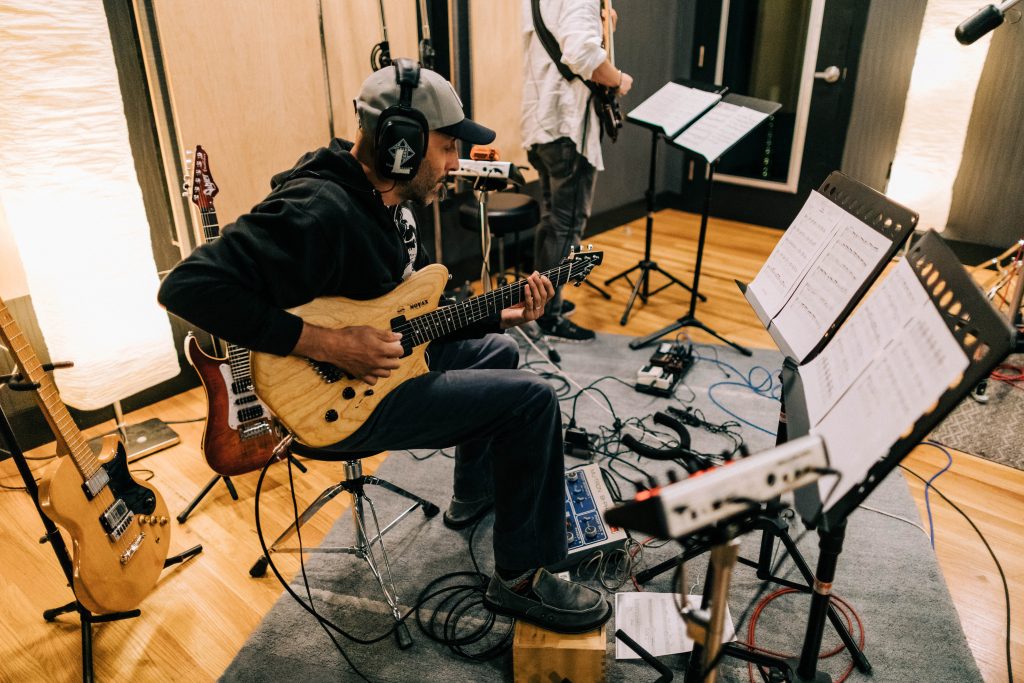
 Diatonic 7-Tone
Diatonic 7-Tone
Looking to improve your scale and triad playing as well as your neck vision? Wanna get your chops together in a way that breeds deeper musicality? Do you have a serious itch to bring your playing to the next level without a thought of ever looking back? Then you’re ready for 7-Tone. Engineered by the late, great bassist, Gerald Carboy, the 7-Tone program is a thorough melodic and harmonic study in the diatonic modal system of heptatonic scales. Even better, you can do this with melodic minor, harmonic minor, harmonic major and modal pentatonic! Seriously, if you’re looking to really get your s#@t together, this is the ticket. Just be ready to play because play you will.
![]()
Check out the five-page lesson article on 7-Tone I did for Guitar Player.
![]()
The 7-Tone program starts with the diatonic modes – you know, the church modes, the ones with all the names after Greek islands, e.g. Ionian, Dorian, etc. It puts you deep into these modes by coming at them from multiple in-depth approaches. Split up into six sections applied to each of the seven modes – Ionian, Dorian, Phrygian, Lydian, Mixolydian, Aeolian and Locrian – they are as follows:
- Scale Fingerings
- Intervals
- Connected Intervals
- 135’s
- 125’s
- 145’s
![]()
The first step is getting specific scale fingerings down. This array of fingerings is purposely set up so you’re always starting on the root and ending on a successive scale degree. The fingerings are very specific and must be played exactly as written for the sections that follow to develop properly. Click here for the Ionian fingerings sheet if you want to check them out in advance. But, wait(!), before you play a note or consider this as your path to neck supremacy, lemme me dole out the rules…
- You must be ready to commit to meeting with me once a week.
- You’ll play every last note and chord in the program. No shortcuts.
- You’ll play every linear component with consistent alternate picking.
- You’ll play every chordal component with hybrid picking.
- You’ll play everything with a metronome. All linear playing is to a 16th note rhythm.
- You will play everything perfect as there’s no allowance for any errors whatsoever. None.
- You will finish what you started at every turn. No exceptions.
![]()
It’s the last two rules that make 7-Tone what it is. Its all about identifying your weak spots and being forced to deal with them. There’s no chance of putting anything aside to deal with it later. You deal with it now. Just as Gerry did with myself and other 7-Toners, I will be with you there every step of the way making sure you play every iota of this program exactly the way you’re supposed to. Once you have the Scale Fingerings together it’s time for the real work starting with the Intervals. Wanna peak at what they’re all about? Click here.
![]()
The ultimate idea behind 7-Tone is to come out of it with absolutely no holes in what Gerry called “the vision”. The vision is the complete outlook on how the neck works both in linear and polytonal forms. And, that’s the beauty of it – the pounding of that vision into your head, hands & heart. I know it may sound a bit granola and/or existential but if you make it through 7-tone, and that’s a solid “if”, your entire guitar playing chi will be changed for life. You’ll feel like you can take on just about anything. The discipline asked of you here is heavy, but man, it’s worth it. 7-Tone was the single most important system of learning I ever worked through and that’s why I continue to teach it, develop it and basically live it nearly 30 years later (I finished in 1993).
If you’re serious about the guitar, improvising on a high level and truly want to get you’re playing together, drop me a line here and let’s get you started on one of the most important journeys you’ll ever take with your axe. Be aware this journey will take you at least a year-and-a-half to finish. That is, of course if you’re putting in the time, otherwise it will take longer and be much more painful on the both of us.
![]()
For more information on pricing and policies, click here.
I look forward to hearing from you.
* The melodic minor, harmonic minor & harmonic major 7-Tone & Pentatonic 5-Tone programs are available upon completion of Diatonic 7-Tone. However, if you think you’re up for going right into one of these programs you can try a condensed version of 7-Tone through just the Ionian mode. Email me for more details.
** 7-string & 8-string guitarists have no fear – Diatonic 7-Tone is ERG friendly 😉





